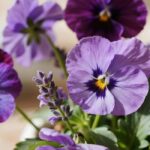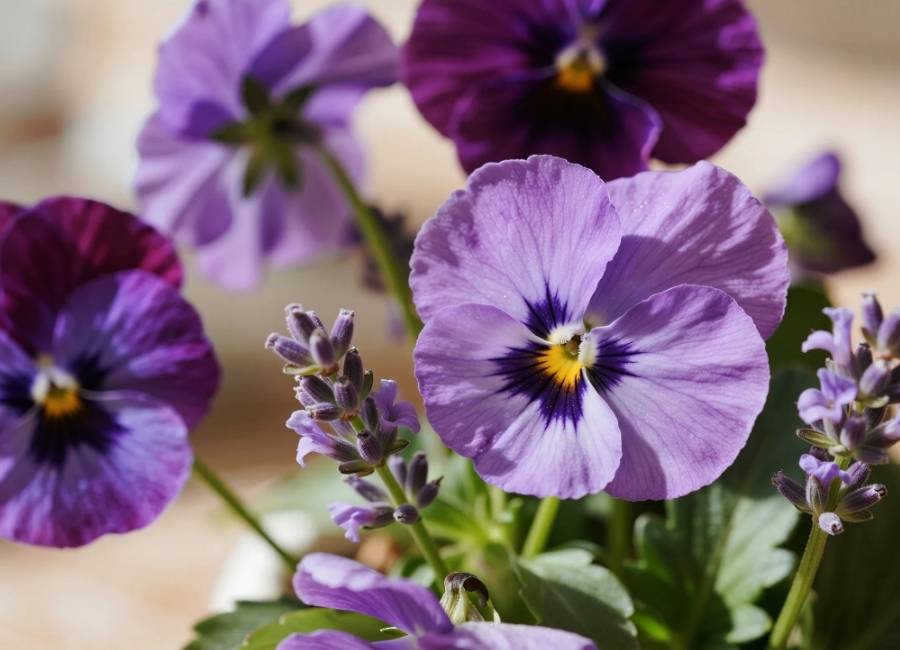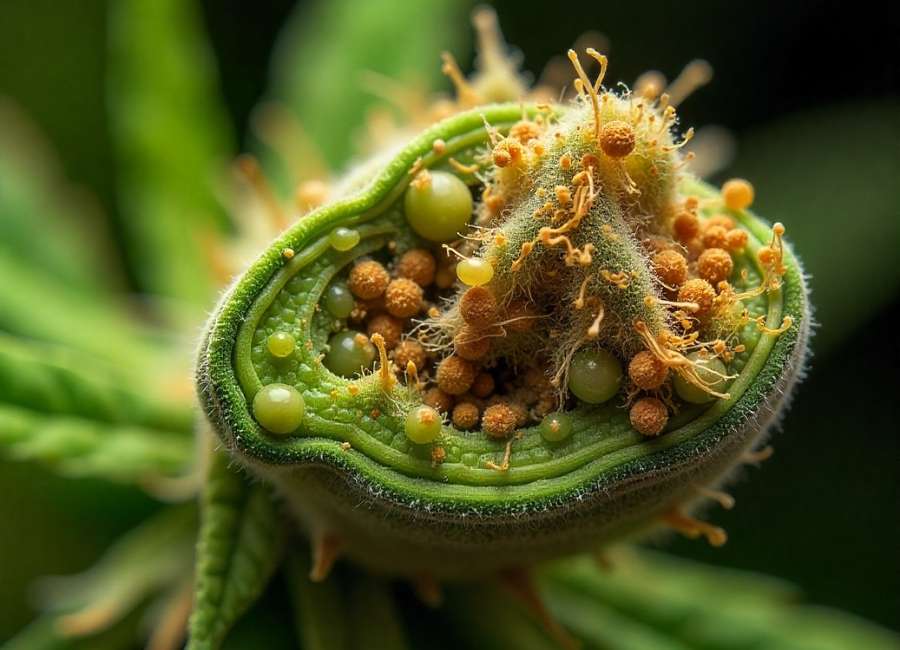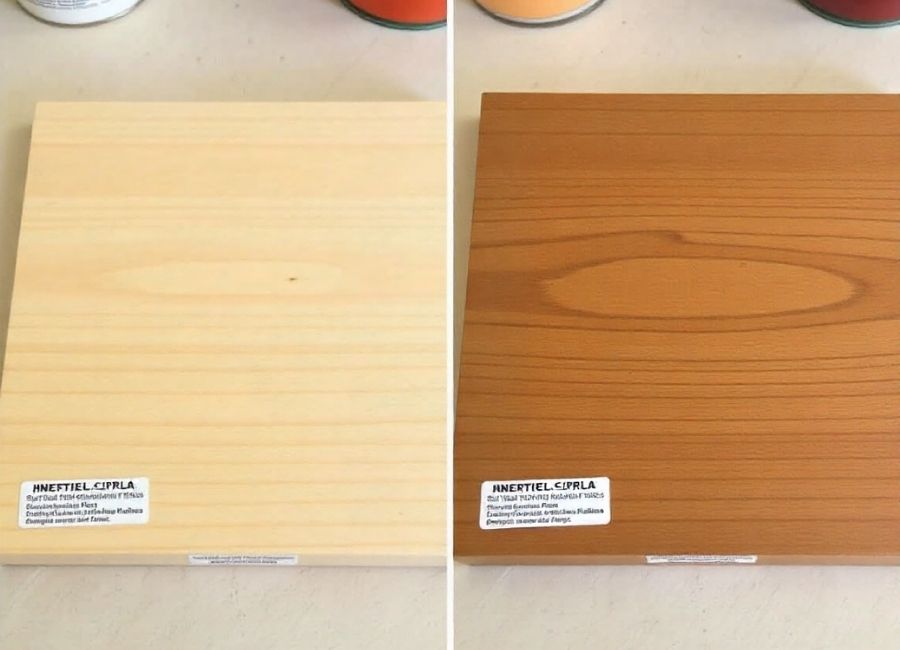Purple is one of the most popular flower colours, and it’s easy to see why. Ranging from light lilac to deep violet, purple flowers are known for their royal symbolism and are sure to add a touch of elegance to any garden.
Please keep reading to discover 62 stunning purple flowers, including where they grow best, their sun and soil needs, and a special growing tip for each one.
1. Verbena (Verbena bonariensis)
These flowers blossom in tall clusters, with shades ranging from magenta to violet. With proper care, Verbena will bloom all summer long.
- Soil Needs: Moist, Well-drained
- Sunlight Needs: Full Sun
- Growing Zones: 9–11
- Flower Tip: Keep the soil damp, as dry conditions can prevent flowering.
2. Lavender (Lavandula)
Tiny lavender buds grow on silvery-gray spires. The fragrance from these little blooms is renowned for its stress-relieving properties.
- Soil Needs: Well-drained
- Sunlight Needs: Full Sun
- Growing Zones: 5–10
- Flower Tip: For showy varieties, opt for ‘Hidcote Superior’.
3. Clematis (Clematis)
The ‘Arabella’ variety of Clematis blooms in a beautiful mauve and can grow up to 30 feet tall. When flourishing, it can produce more flowers in less space than almost any other plant.
- Soil Needs: Well-drained
- Sunlight Needs: Full Sun
- Growing Zones: 3–9
- Flower Tip: Plant Clematis in a sheltered spot to help it thrive.
4. Bellflower (Campanula)
These charming little blossoms are upturned, cup-shaped flowers that come in hues from white to lavender. Campanula makes excellent ground cover and will thrive in a rock garden.
- Soil Needs: Well-drained
- Sunlight Needs: Full Sun/Partial Shade
- Growing Zones: 3–9
- Flower Tip: Cut it back in late winter to help rejuvenate the plant for spring.
5. Dwarf Iris (Iris Reticulata)
Dwarf Irises are petite versions of the well-known slender beauties. They bloom early and unfurl with dark, rich petals.
- Soil Needs: Well-drained
- Sunlight Needs: Full Sun
- Growing Zones: 4–9
- Flower Tip: Plant these bulbs from late winter to early spring for the best results.
6. Balloon Flower (Platycodon)
The Balloon Flower is named for its hollow, balloon-like shape before it blossoms into a five-pointed bloom.
- Soil Needs: Well-drained
- Sunlight Needs: Full Sun/Partial Shade
- Growing Zones: 3–9
- Flower Tip: Choose ‘Astra Blue’ or ‘Fuji Blue’ if you’re looking for a pale, violet color.
7. Catmint (Nepeta)
These long, silvery floral spikes are easy to grow and provide a long season of blooms. Catmint also makes for great cut flowers in the summer.
- Soil Needs: Well-drained
- Sunlight Needs: Full Sun
- Growing Zones: 3–8
- Flower Tip: Many hybrid species are sterile, so they will not self-seed.
8. Salvia (Salvia)
Salvia can grow anywhere from 8 to 30 inches tall. Its stalk is covered in small, tubular plumes in dramatic purple hues.
- Soil Needs: Well-drained
- Sunlight Needs: Full Sun/Partial Shade
- Growing Zones: 4–9
- Flower Tip: Though it prefers full sun, this plant can also do well in the shade in hot climates.
9. Allium (Allium)
Ornamental Allium comes in a variety of hues and heights. They traditionally have a long, slender stalk with a globe of blooms at the top. The ‘Globemaster’ and ‘Gladiator’ varieties are the tallest and have the largest flower heads.
- Soil Needs: Well-drained
- Sunlight Needs: Full Sun/Partial Shade
- Growing Zones: 3–9
- Flower Tip: This flower is drought-tolerant and prefers to be grown on the drier side.
10. Monkshood (Aconitum napellus)
Monkshood gets its name from its resemblance to a monk’s habit. The flowers grow on a tall stem and blossom in a deep shade of purple. This flower is poisonous, so handle it with care.
- Soil Needs: Moist, Well-drained
- Sunlight Needs: Partial Shade
- Growing Zones: 4–8
- Flower Tip: This flower prefers damp soil and shade. Monkshood can also be slow to establish.
11. Alpine Betony (Stachys monieri)
Alpine Betony is a clump-forming perennial that grows atop bright green foliage. Bright purple flowers bloom in early summer.
- Soil Needs: Moist, Well-drained
- Sunlight Needs: Full Sun
- Growing Zones: 4–9
- Flower Tip: To encourage more buds to form, remove flowers once the blooms fade.
12. Lily of the Nile (Agapanthus orientalis)
Lily of the Nile blooms in large, round clusters ranging from light blue to deep violet. They grow on top of stems that can reach 4 feet tall.
- Soil Needs: Well-drained
- Sunlight Needs: Full Sun
- Growing Zones: 8–11
- Flower Tip: Watering regularly while it is increasing first will establish an extensive root system.
13. Anemone (Anemone nemorosa)
The Anemone is a diverse species with many colors and varieties; some bloom in spring and others in fall. They can be low-growing plants that prefer woodlands and rock gardens, or tall-growing plants that thrive in late summer.
- Soil Needs: Moist, Well-drained
- Sunlight Needs: Partial Shade
- Growing Zones: 3–9
- Flower Tip: Only move these plants in the spring. Anemones may be slow to grow, but once established, they are likely to spread.
14. Bee Orchid (Ophrys apifera)
Named for their bee-like shape, these orchids attract male bees who help pollinate the flowers. The orchid comes in many color combinations: the three outer petals range from white to purple, and the central lip can be a solid color, striped, or even dotted.
- Soil Needs: Moist, Well-drained
- Sunlight Needs: Full Sun/Partial Shade
- Growing Zones: 6–9
- Flower Tip: Bee Orchids are hard to grow outside. Plant this in a pot and enjoy it inside your Home.
15. Bittersweet Nightshade (Solanum dulcamara)
This fast-growing vine can quickly overtake moist habitats. While it is not the same as Deadly Nightshade (Belladonna), it can be fatal to livestock.
- Soil Needs: Well-drained
- Sunlight Needs: Partial Shade
- Growing Zones: 4–8
- Flower Tip: Keep this vine contained, as it can become invasive.
16. Wild Indigo (Baptisia australis)
A member of the pea Family, Wild Indigo’s lupine-like flowers are ideal for cutting and can grow to 4 feet tall. They stay healthy all summer and provide a great backdrop for later-blooming Irises.
- Soil Needs: Well-drained
- Sunlight Needs: Full Sun
- Growing Zones: 3–10
- Flower Tip: Once established, Wild Indigo is vigorous, drought-tolerant, and requires very little maintenance. Leave the flowers until seedpods develop, then cut them back by one-third.
17. Bell Heather (Erica cinerea)
Bell Heather is a low-growing shrub in the heath Family with purple, bell-shaped blooms. The flowers have a dry texture, similar to strawflower.
- Soil Needs: Well-drained
- Sunlight Needs: Full Sun
- Growing Zones: 6–8
- Flower Tip: Help the plant grow extensive roots with a thick layer of mulch and a regular watering schedule.
18. Blue-Eyed Grass (Sisyrinchium montanum)
Blue-Eyed Grass is not Grass at all, but a perennial wildflower. It forms clumps of long, green foliage with a small, bright-purple flower.
- Soil Needs: Well-drained
- Sunlight Needs: Partial Shade
- Growing Zones: 4–9
- Flower Tip: Wait to cut the leaves back until they turn brown, and cut just above the crown. This gives the foliage time to gather energy for next season’s blooms.
19. Wild Hyacinth (Dichelostemma capitatum)
Wild Hyacinth is a native wildflower of California that grows easily in meadows across the state. A ball-shaped cluster of up to 20 individual flowers blooms on top of a slender stem.
- Soil Needs: Well-drained
- Sunlight Needs: Full Sun/Partial Shade
- Growing Zones: 10–11
- Flower Tip: These drought-tolerant plants are great for xeriscaping. Wild Hyacinth will grow well with little care.
20. China Aster (Callistephus chinensis)
With blooms similar to the chrysanthemum, the China Aster blooms in the summer and comes in many colors. It often has a yellow center with bushy, long, colorful petals that are about 2 to 3 inches long.
- Soil Needs: Well-drained
- Sunlight Needs: Full Sun/Partial Shade
- Growing Zones: 1–10
- Flower Tip: Grow China Aster in a different location every year and avoid overcrowding.
21. Canterbury Bells (Campanula medium)
Much like their bellflower relatives, Canterbury Bells are easily grown and cared for. They have an elongated bell shape and come in many colors.
- Soil Needs: Moist, Well-drained
- Sunlight Needs: Full Sun/Partial Shade
- Growing Zones: 4–10
- Flower Tip: Expect only a small clump in the first year. By the second year, they might require staking to keep them upright.
22. Carnation (Dianthus caryophyllus)
Carnations are popular for the spectrum of colors they come in. They grow full blooms of serrated petals on a long, narrow stalk.
- Soil Needs: Moist, Well-drained
- Sunlight Needs: Full Sun/Partial Shade
- Growing Zones: 3–10
- Flower Tip: Remove spent flowers promptly to encourage continued blooming.
23. Cattleya Orchid (Cattleya)
Cattleyas are one of the most popular types of orchids and have been hybridized for over 100 years. They now come in an array of colors, shapes, and sizes.
- Soil Needs: Moist, Well-drained
- Sunlight Needs: Full Sun
- Growing Zones: 11
- Flower Tip: This orchid prefers greenhouse conditions. If growing one at Home, place it on your windowsill to ensure it gets enough sunlight.
24. Sea Thistle (Cirsium japonicum)
This hardy perennial is gaining popularity in the U.S. as a cut flower for its attractive, globe-like flowers. It also attracts bees, butterflies, and birds to your garden.
- Soil Needs: Moist, Well-drained
- Sunlight Needs: Full Sun
- Growing Zones: 5–8
- Flower Tip: Use caution when handling, as the spine and leaves have prickly edges. Cut off the head if you do not want more seedlings to grow.
25. Calla Lily (Zantedeschia)
Calla Lilies are popular for their elegant bell shape, both in gardens and as cut flowers. They grow well outdoors and as houseplants.
- Soil Needs: Moist, Well-drained
- Sunlight Needs: Full Sun/Partial Shade
- Growing Zones: 8–10
- Flower Tip: Typically planted after the threat of frost, Calla Lilies should be planted deep and watered well. Aside from regular watering and fertilizing, they are fairly low-maintenance.
26. Cosmos (Cosmos)
Cosmos are showy annuals with bowl-shaped flowers and long stems. They are great cut flowers and will bring birds and butterflies to your garden.
- Soil Needs: Well-drained
- Sunlight Needs: Full Sun
- Growing Zones: 3–10
- Flower Tip: Remove faded flowers to prolong flowering and stake when necessary.
27. Common Comfrey (Symphytum officinale)
Comfrey is a strong-growing perennial with hairy leaves and a bell-shaped flower. The plant’s foliage is often used to soothe inflammation and sores.
- Soil Needs: Moist, Well-drained
- Sunlight Needs: Full Sun
- Growing Zones: 3–9
- Flower Tip: Comfrey can grow well almost anywhere and can be planted anytime the soil can be worked. Give it plenty of room for proper root development.
28. Coneflower (Echinacea Purpurea)
Bright and daisy-like, these popular perennials are drought-tolerant and easy to care for. They also make great cut flowers and attract songbirds.
- Soil Needs: Moist, Well-drained
- Sunlight Needs: Full Sun
- Growing Zones: 3–9
- Flower Tip: If your plants are floppy, cut them to the ground after they flower. Otherwise, just be sure to cut faded flowers to prolong the blooming season.
29. Candytuft (Iberis pruitii)
Candytuft is a flowering evergreen native to Europe. While usually white, it also comes in lilac and works well in rock gardens.
- Soil Needs: Well-drained
- Sunlight Needs: Full Sun
- Growing Zones: 7–11
- Flower Tip: Do not let this short-blooming perennial become too tall, as it will get spindly with growth.
30. Cyclamen (Cyclamen persicum)
Cyclamen is a popular houseplant that produces vibrant flowers in reds and purples. The varieties sold as houseplants are tropical and should be kept indoors.
- Soil Needs: Well-drained
- Sunlight Needs: Full Sun/Partial Shade
- Growing Zones: 5
- Flower Tip: Cyclamens are sensitive to temperature and will not grow well in the cold or in heat over 70°F. They are also sensitive to over- or under-watering.
31. Crocus (Crocus Vernus)
The crocus is one of the first flowers to bloom in early spring. They come in many colors, and most have strong fragrances that lure bees out of their hives.
- Soil Needs: Well-drained
- Sunlight Needs: Full Sun/Partial Shade
- Growing Zones: 3–8
- Flower Tip: Plant Crocus bulbs in early autumn and consider planting them in an area that allows them to create a carpet of blooms.
32. Columbine (Aquilegia)
Columbines bloom in the springtime from dark green foliage that turns maroon in the fall. The bell-shaped flowers come in a variety of colors and are a favorite of hummingbirds.
- Soil Needs: Well-drained
- Sunlight Needs: Full Sun/Partial Shade
- Growing Zones: 3–8
- Flower Tip: These perennials are not too particular but prefer mild climates. Give them plenty of mulch to keep the soil moist and insulated through winter.
33. Dendrobium Orchid (Dendrobium)
Dendrobiums come in thousands of varieties but can be broken down into two groups: hard-caned and soft-caned. Hard-caned varieties are very thin with darker leaves. Soft canes are evergreen and can keep their leaves for many years.
- Soil Needs: Well-drained
- Sunlight Needs: Full Sun (but not direct)
- Growing Zones: 11
- Flower Tip: Dendrobiums prefer small pots and like to be fairly dry before re-watering. Use a shallow tray of pebbles filled with water to help with humidity.
34. Fuchsia (Fuchsia magellanica)
Fuchsia is an exotic, two-toned flower with an unusual shape. They can most often be found in hanging baskets with overflowing blooms.
- Soil Needs: Well-drained
- Sunlight Needs: Partial Shade
- Growing Zones: 9–10
- Flower Tip: While exotic, Fuchsia is sensitive to heat. Be sure to give it plenty of shade if you live in a warmer climate.
35. Foxglove (Digitalis purpurea)
Foxglove is a tall, dramatic spike covered in tubular flowers. It blooms midsummer in a wide array of colors. Avoid Foxglove if you have any cardiac issues, as it contains cardiac glycosides, which can be dangerous to those at risk.
- Soil Needs: Moist, Well-drained
- Sunlight Needs: Full Sun/Partial Shade
- Growing Zones: 4–10
- Flower Tip: If you want the flower to multiply, leave the flower spike. Otherwise, remove it so that side shoots will form and continue to bloom.
36. Gladiolus (Gladiolus hortulanus)
This perennial favorite grows beautiful, showy flowers. Growing up to 6 feet high in a multitude of colors, Gladiolus makes a great cut flower.
- Soil Needs: Well-drained
- Sunlight Needs: Full Sun
- Growing Zones: 6–10
- Flower Tip: Dig the corms up before the first frost and store them through winter. Be sure to keep them from freezing.
37. Waxflower (Chamelaucium)
Waxflower blooms in late winter and has become increasingly popular in the floral industry. The flowers range from deep purple to bright red and grow on stems covered in needle-like foliage.
- Soil Needs: Well-drained
- Sunlight Needs: Full Sun/Partial Shade
- Growing Zones: 9–11
- Flower Tip: This is the perfect flower for lazy gardeners. Waxflowers need very little care—ensure the soil drains well.
38. Perennial Geranium (Geranium)
These perennial flowers produce a seemingly endless supply of blooms ranging from white to deep blue, flowering from June until the first frost.
- Soil Needs: Moist, Well-drained
- Sunlight Needs: Full Sun/Partial Shade
- Growing Zones: 4–8
- Flower Tip: It’s best to pair this summer bloom with spring-blooming bulbs like hyacinths or daffodils.
39. Heliotrope (Heliotropium peruvianum)
Heliotropes are bushy annuals with tiny clusters of blue, white, or purple flowers. They have a strong perfume and very deep green leaves.
- Soil Needs: Moist, Well-drained
- Sunlight Needs: Full Sun/Partial Shade
- Growing Zones: 10–11
- Flower Tip: Keep the soil moist, but don’t let it get soggy. Store cuttings inside through winter and then plant them again in the spring. Cuttings produce much stronger plants than seeds.
40. Honesty (Lunaria annua)
Honesty grows for its bright, fragrant flowers in the warmer months and also for its unique, oval, and translucent seed-heads that appear after the blooms, which florists covet.
- Soil Needs: Moist, Well-drained
- Sunlight Needs: Full Sun/Partial Shade
- Growing Zones: 10–11
- Flower Tip: Keep the soil moist, but do not let it get soggy. Store cuttings inside through winter and then plant them again in the spring. Cuttings produce much stronger plants than seeds.
41. Liatris (Liatris)
Ranging from 1 to 5 feet tall, these spikes are covered in fuzzy purple flowers—Liatris blooms from the top to the bottom, unlike most plants that bloom from the bottom up.
- Soil Needs: Well-drained
- Sunlight Needs: Full Sun/Partial Shade
- Growing Zones: 3–10
- Flower Tip: Liatris is a prairie wildflower and can grow nearly anywhere. Extra water is needed in the first few weeks, but then it can be left to flourish on its own.
42. Lilac (Syringa vulgaris)
Lilacs are a beloved, fragrant shrub that produces clusters of light-purple flowers. They bloom for about two weeks and prefer northern states.
- Soil Needs: Well-drained
- Sunlight Needs: Full Sun/Partial Shade
- Growing Zones: 3–7
- Flower Tip: Apply a layer of compost and a layer of mulch each spring to help the plant retain moisture.
43. Lupine (Lupinus)
Lupine comes in a wide array of colors and appears similar to sweet peas, with floral spikes that emerge from a tall green stem.
- Soil Needs: Well-drained
- Sunlight Needs: Full Sun
- Growing Zones: 3–9
- Flower Tip: If you are growing Lupine from seeds, try a 7-day cold treatment to increase germination. Wrap seeds in a damp paper towel and store them in the refrigerator.
44. Lisianthus (Eustoma Grandiflorum)
Lisianthus flowers look very similar to a rose but come in shades of blue and lilac. They can have single or double blooms, with rougher edges, or darker coloration in the center.
- Soil Needs: Well-drained
- Sunlight Needs: Full Sun
- Growing Zones: 9–11
- Flower Tip: Avoid overwatering and stop watering once the plant becomes dormant. Healthy plants will enjoy a long blooming season.
45. Aster (Aster)
Asters look similar to daisies, with starry-shaped heads and yellow centers. The flower can range in height from 6 inches to 8 feet and can serve many different functions in your garden.
- Soil Needs: Moist, Well-drained
- Sunlight Needs: Full Sun/Partial Sun
- Growing Zones: 3–8
- Flower Tip: Asters like cool climates and moist soil. If you do not receive 1 inch of rain a week, be sure to water them.
46. Morning Glory (Ipomoea purpurea)
Morning Glories are vines with saucer-shaped blooms that open during the morning, hence the name. You can often see dark marks on each petal from where the bud neatly folds.
- Soil Needs: Moist, Well-drained
- Sunlight Needs: Full Sun
- Growing Zones: 3–10
- Flower Tip: Before you plant a Morning Glory seed, nick it with a sharp edge to help it absorb water and germinate quickly.
47. Mystic Merlin (Malva Sylvestris)
These magical-looking flowers open with silky blooms in rich shades of purple. They are ideal for cottage gardens with their long-blooming life cycle.
- Soil Needs: Well-drained
- Sunlight Needs: Full Sun/Partial Shade
- Growing Zones: 4–8
- Flower Tip: If you are seeding Mystic Merlin indoors, do not transplant until there are at least two sets of true leaves.
48. Purple Pansy (Viola wittrockiana)
Pansies come in a wide variety of colors and can bloom in any season. They are hardy annuals that do well as borders and ground covers.
- Soil Needs: Moist, Well-drained
- Sunlight Needs: Full Sun
- Growing Zones: 4–8
- Flower Tip: Remember to water Pansies regularly. Drought is the most common reason for failure.
49. Pasque (Pulsatilla)
Pasques are alpine natives. They have silky, fern-like foliage and purple petals with yellow centers. This flower is an excellent addition to a rock garden.
- Soil Needs: Moist, Well-drained
- Sunlight Needs: Full Sun
- Growing Zones: 5–9
- Flower Tip: Due to their long taproots, they do not transplant well. Choose your growing site carefully.
50. Petunia (Petunia hybrida)
With 35 true species worldwide, hybrid Petunias can be found in almost any color. The most traditional varieties are sprawling plants with white or purple blooms.
- Soil Needs: Well-drained
- Sunlight Needs: Full Sun
- Growing Zones: 9–11
- Flower Tip: These flowers are frost-tender and fast-growing. Keep them warm, dry, and protected from strong winds.
51. Rhododendron (Rhododendron)
Rhododendrons are popular for their showy springtime blooms and large green leaves that last almost all year. The flowers are often either funnel or bell-shaped with a pleasant perfume.
- Soil Needs: Moist, Well-drained
- Sunlight Needs: Partial Shade
- Growing Zones: 4–9
- Flower Tip: These shrubs do best under a canopy of shelter with damp summers. Mulching annually will keep any variety happy and healthy.
52. Scabiosa (Scabiosa)
Also known as pincushion flowers, Scabiosa is an interesting flower with a pincushion-like center and an outer layer of petals. This summer bloomer is most often found in shades of blue, white, and purple.
- Soil Needs: Moist, Well-drained
- Sunlight Needs: Full Sun
- Growing Zones: 3–7
- Flower Tip: In order to keep the plant flowering, you must remove withering blooms.
53. Sea Holly (Eryngium)
If you are looking to add a less traditional-looking flower to your garden, Sea Holly is a great option. It has spiny leaves and a tassel-like bloom.
- Soil Needs: Well-drained
- Sunlight Needs: Full Sun
- Growing Zones: 4–11
- Flower Tip: Sea Holly has a long taproot that allows it to grow in many different soil types, but also makes transplanting difficult. Find a permanent Home for these flowers.
54. Wisteria (Wisteria sinensis)
Wisteria is known for its intoxicating fragrance, but this quick-climbing vine also has an abundance of cascading blooms. Colors range from white and blue to violet.
- Soil Needs: Well-drained
- Sunlight Needs: Full Sun/Partial Shade
- Growing Zones: 5–8
- Flower Tip: Early blooms can be damaged by cold temperatures. Be sure to prune when needed.
55. Hydrangea (Hydrangea macrophylla)
These big, billowy blooms will definitely brighten up your garden. They have large heads composed of many smaller flowers.
- Soil Needs: Moist, Well-drained
- Sunlight Needs: Full Sun/Partial Shade
- Growing Zones: 4–9
- Flower Tip: Increasing the acidity of the soil will help your hydrangeas turn a clearer blue.
56. Zinnia (Zinnia elegans)
Zinnias have a big, bright, daisy-like head that grows from a single stem. There are many varieties; the most common is the dahlia flower, which grows up to 3 feet.
- Soil Needs: Well-drained
- Sunlight Needs: Full Sun
- Growing Zones: 3–10
- Flower Tip: Remove dead flowers to prolong flowering. Be mindful that they will die with the first frost.
57. Moonflower (Datura stramonium)
Moonflowers grow on perennial vines in sub-tropical zones. Their large blooms produce a relaxing smell and generally come in white or purple.
- Soil Needs: Well-drained
- Sunlight Needs: Full Sun
- Growing Zones: 8–11
- Flower Tip: Plant Moonflowers near a trellis. They readily grow upwards and can easily reach up to 20 feet.
58. Dianthus (Dianthus)
Belonging to the same Family as carnations, Dianthus are colorful, hardy annuals. They emit a spicy fragrance and can most frequently be found in hues of pink, purple, and white.
- Soil Needs: Well-drained
- Sunlight Needs: Full Sun/Partial Shade
- Growing Zones: 3–9
- Flower Tip: Plant Dianthus in a spot where it will receive at least 6 hours of sun. It should also be fertilized every 6 to 8 weeks.
59. Hellebore (Helleborus)
Hellebore is a perennial with leathery leaves that protect a circle of tiny stamen-like petals. It has a long blooming period, lasting anywhere from 6 to 8 weeks, and ranges in color from white to purple.
- Soil Needs: Well-drained
- Sunlight Needs: Full Sun/Partial Shade
- Growing Zones: 4–8
- Flower Tip: Do not plant these too deeply. Make sure the crown is only just covered by soil.
60. Sweet Pea (Lathyrus odoratus)
Sweet peas come in many lovely colors and give off a delicate fragrance that is commonly used in perfumes.
- Soil Needs: Well-drained
- Sunlight Needs: Full Sun
- Growing Zones: 7–10
- Flower Tip: Sweet peas are slow to germinate, making them somewhat difficult to grow, but they are quite hardy once they develop.
61. Gloxinia (Sinningia speciosa)
Today’s Gloxinia are hybrids that can breed quickly and produce many blooms. The display lasts about two months, and the plant rarely returns after fading.
- Soil Needs: Moist, Well-drained
- Sunlight Needs: Partial Shade
- Growing Zones: 5–10
- Flower Tip: These plants are best grown as annuals. Focus on keeping them fresh while blooming by giving them a high-phosphorus liquid plant food every 2 weeks.
62. Butterfly Bush (Buddleia davidii)
The Butterfly Bush has lance-shaped leaves with arching branches. Buddleia is one of the most fragrant bushes and attracts hummingbirds and butterflies—hence the name.
- Soil Needs: Moist, Well-drained
- Sunlight Needs: Full Sun
- Growing Zones: 5–10
Flower Tip: Buddleia can grow into a tree and develop rugged trunks in milder climates. In northern regions, apply a generous amount of fertilizer in the winter to keep the plants healthy.
- Here are 10 more stunning purple flowers to add to your garden.
63. Passion Flower (Passiflora incarnata)
This intricate flower features a unique, complex structure with a fringe of purple filaments over white or lavender petals. Passion flowers are fast-growing vines that produce edible fruit called maypops.
- Soil Needs: Moist, Well-drained
- Sunlight Needs: Full Sun/Partial Shade
- Growing Zones: 7–11
- Flower Tip: Provide a sturdy trellis or fence for this vigorous vine to climb. In colder climates, grow it in a pot and bring it indoors for the winter.
64. Lisianthus (Eustoma grandiflorum)
With elegant, rose-like blooms, Lisianthus flowers come in beautiful shades of purple, from soft lilac to deep violet. Their long vase life makes them a favorite for cut flower arrangements.
- Soil Needs: Well-drained
- Sunlight Needs: Full Sun
- Growing Zones: 8–10
- Flower Tip: Lisianthus can be tricky to grow from seed, so starting with young plants is often easier. Ensure they have good air circulation to prevent fungal diseases.
65. African Violet (Saintpaulia ionantha)
A classic houseplant, the African Violet produces clusters of delicate, velvety flowers in shades of deep purple, lavender, and blue. Its fuzzy green leaves form a neat rosette.
- Soil Needs: Moist, Well-drained, porous
- Sunlight Needs: Bright, Indirect Light
- Growing Zones: 11-12 (as a houseplant)
- Flower Tip: Water from the bottom by placing the pot in a saucer of water. Avoid getting water on the leaves to prevent spotting.
66.Sea Lavender (Limonium latifolium)
Also known as Statice, Sea Lavender produces clouds of tiny, paper-like purple flowers on wiry stems. It is highly valued for its use in dried floral arrangements as it retains its color beautifully.
- Soil Needs: Well-drained, sandy
- Sunlight Needs: Full Sun
- Growing Zones: 3–9
- Flower Tip: This plant is very drought-tolerant once established and thrives in coastal areas with salty air.
67. Bachelor’s Button (Centaurea cyanus)
Also called cornflower, this charming annual features ruffled, intricate blooms. While traditionally blue, varieties are available in stunning shades of deep purple and magenta.
- Soil Needs: Well-drained
- Sunlight Needs: Full Sun
- Growing Zones: 2–11 (as an annual)
- Flower Tip: Deadhead spent blooms regularly to encourage continuous flowering throughout the summer. They self-seed readily, so you’ll likely see them return next year.
68. Anise Hyssop (Agastache foeniculum)
This perennial features showy spikes of lavender-purple flowers that are highly attractive to bees, butterflies, and hummingbirds. Its leaves have a lovely anise or licorice scent when crushed.
- Soil Needs: Well-drained
- Sunlight Needs: Full Sun/Partial Shade
- Growing Zones: 4–8
- Flower Tip: Anise Hyssop is drought-tolerant and thrives in lean soil. Avoid over-fertilizing, which can cause leggy growth.
69. Peruvian Lily (Alstroemeria)
Also known as the Lily of the Incas, Alstroemeria offers exotic, trumpet-shaped flowers often marked with contrasting stripes or flecks. Purple varieties like ‘Purple Rain’ are particularly striking.
- Soil Needs: Moist, Well-drained
- Sunlight Needs: Full Sun/Partial Shade
- Growing Zones: 7–10
- Flower Tip: Plant the tuberous roots deep in the soil to protect them. Once established, they will multiply and form a lush clump.
70. Impatiens (Impatiens walleriana)
A shade-garden staple, Impatiens provide a profusion of flat, five-petaled flowers in vibrant colors, including many shades of purple and lilac. They bloom continuously from spring until the first frost.
- Soil Needs: Moist, Well-drained
- Sunlight Needs: Partial to Full Shade
- Growing Zones: 10–11 (grown as an annual elsewhere)
- Flower Tip: Impatiens require consistent moisture, so water them regularly, especially during hot, dry weather. They are perfect for brightening up shady spots.
71. Pincushion Flower (Scabiosa)
Also known as Scabiosa, this flower has a unique appearance with a domed, “pincushion” center surrounded by a frilly layer of larger petals. It blooms for a long period in shades of lavender and deep purple.
- Soil Needs: Well-drained, alkaline
- Sunlight Needs: Full Sun
- Growing Zones: 3–7
- Flower Tip: Deadhead spent flowers to promote more blooms. The long stems make it an excellent choice for cut flower gardens.
72. Cranesbill (Geranium)
Often called hardy geraniums, Cranesbill varieties produce a profusion of simple, five-petaled flowers. The ‘Rozanne’ variety is famous for its violet-blue flowers that bloom from late spring until the first frost.
- Soil Needs: Moist, Well-drained
- Sunlight Needs: Full Sun/Partial Shade
- Growing Zones: 5–8
- Flower Tip: Shear the plant back by about half after its first major flush of blooms to encourage fresh foliage and a second wave of flowers.











